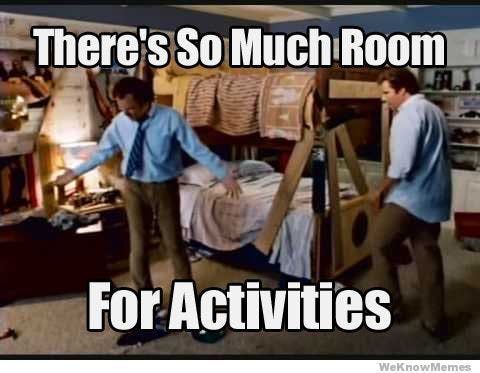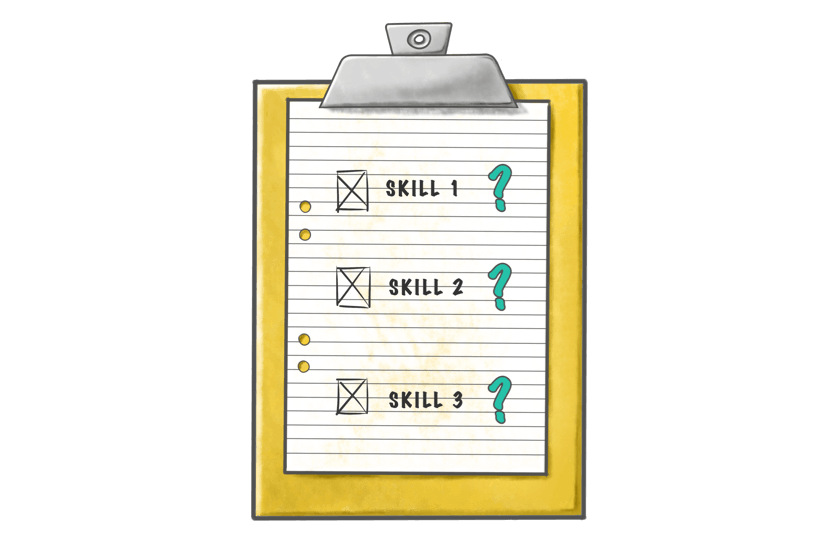
Hey blog readers – I have great news – I’m now a fully fledged Yarnoer!
And while my last post was mostly about how my avatar looks more like a young Simon Baker than me, there have been more substantial developments - Yarno has put me to work!
My first task was to make an Appropriate Workplace Behaviour (AWB) learning Campaign. Exciting - Because as we all know, everyone loves compliance training!
So, my task was simple - I just had to take a few hundred pages of legal documents and whip them up into an easy, understandable Yarno campaign for learners with little to no background knowledge.
Let's head now to live shots of my brain:

Though now, at the end of this process, we've got something we're really proud of. Micro-learning scenarios that educate employees about AWB in practical settings. If you want to learn more about the content and how you can use it in your business, get in touch with us.
But anyway, enough of the shameless content plug, let me tell you about my #firstworldproblems.
The 5 Stages of Grief in Making an AWB Campaign
DISCLAIMER: this process was actually pretty fun and only caused me mild amounts of grief.
Denial
Denial is usually not accepting something. But my denial was a little different. My brain was pretty good at accepting this was happening. My brain was less good at accepting this would be super hard.
Call it a blind arrogance born out of the dangerous cocktail of youth, white male privilege and a few years at law school, but I genuinely didn’t think writing some multi-choice questions about workplace behaviour could be that difficult.
I mean, I knew what bullying, discrimination and sexual harassment were. All I had to be able to do was communicate that in an understandable and legally compliant way. Too easy…right?
Wrong.
Anger
Anyone who has ever had to read anything written by lawyers will know this stage all too well. These documents weren't written in English, but fluent in Legal-ese.
And when you’re trying to make something understandable, but all people can do is speak nonsense - it can make you a little grumpy.
Even when the documents used a normal word like unreasonable, they provided creative ways of saying nothing.
Take the explanation: “Unreasonable behaviour is behaviour that a reasonable person, having regard to the circumstances, may see as unreasonable.”
And just so its crystal clear to everyone - unreasonable means unreasonable, as long as you’re reasonable.

Given these enormously straightforward explanations of everything happening, just explaining concepts wasn't going to work. So we decided to make the questions scenario based.
This made abstract concepts and Legal-ese into something a little more understandable and real.
Bargaining
This is where, in my experience, a lot of people who have to write legal content for the masses in an LMS see the roadblock of lengthy content, or complicated concepts, and just pass that onto the learner.
If you have a hard topic area, or one that is extremely dense, you’re often forced into longer and more technical explanations, whether it be in text or on video.
But Liam, isn’t Yarno all about micro-learning? Isn’t everything short? How did you overcome this?
Great questions. And this is the beauty of bargaining - I only sort of overcame them. Because making dense concepts and scenario questions into understandable micro-learning doesn’t happen very easily.
This is where 300 word explanations throwing around terms like “adverse action” and non-sensical explanations of what is unreasonable service. They’re all legally correct, but they’re dense and filled with unfamiliar phrases.
This is also where not inputting your content into Yarno, but instead working off a word processor can convince you that you've got more space than you really do.

Depression
Thinking I had gamed the system - we internally tested the content with these long explanations filled with legal phraseology.
And shock, horror - the overwhelming feedback was:
– “this is a little complicated”
– “it’s a lot to take in”
– “some scenarios and explanations run a little long”
or to put it another way, there was not so much room for activities.
This is where you can get in a funk and accept second best. But if you want to strive for an innovative approach to learning, I realised we couldn’t just parrot long explanations.
We needed to do better. We needed to do more work. (And I’d been working on it for a little while….)
This is where some great feedback and help from a team around you really helps.
But I did have the essence of our eventual campaign.
I had some workable scenarios.
I had converted the legal speak into just long winded and occasionally complicated English, but it needed another step - becoming Yarno ready.
Accepting my challenge, I moved on to the final stage of this project giving me grief - acceptance.
Acceptance
This was by far the most rewarding part. Accepting that we had to do better.
This is where we would find our point of difference, by iterating even further. So instead of having walls of text, or abstract explanations of concepts, we took a little more time and made it Yarno-ified.
So that means we’ve got some micro-learning scenarios that speak to you in conversational English.
It might have taken me a little while, and a lot of help from everyone at Yarno along the way, but we might have something cool going here.
So if you want to check it out, get in contact, we’d love to get you using our hot new AWB content!













































































































